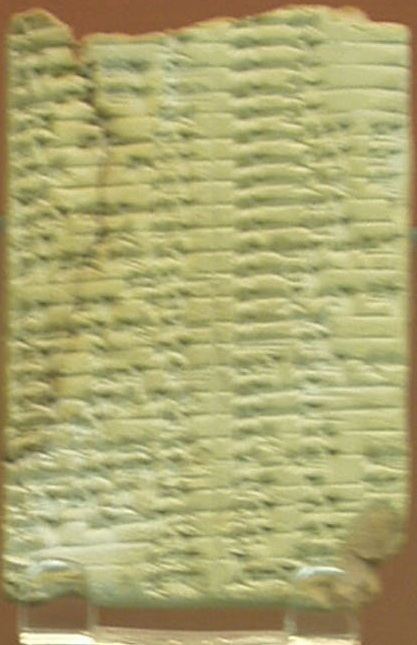 | ||
The Kassites, the ancient Near Eastern people who seized power in Babylonia following the fall of the first Babylonian Dynasty and subsequently went on to rule it for some three hundred and fifty years during the late bronze age, possessed a pantheon of gods but few are known beyond the laconic mention in the theophoric element of a name. The only Kassite deities who had separate and distinct temples anywhere in Babylonia were apparently the patron deities of the royal family, Šuqamuna and Šumaliya.
The evidence from the Kassite-Akkadian vocabulary (pictured) discovered by Hormuzd Rassam and the Kassite-Akkadian name list is that the Kassites identified their gods with those of Mesopotamia, if these sources are sufficiently contemporary. Mountain gods were a popular motif in Kassite art, on cylinder seals and, for example, the brickwork façade of the temple of Karaindaš, the "Eanna of Inanna." The generic term for “god” in the Kassite language was mašḫu or bašḫu. Of the three hundred or so known Kassite words, around thirty of them are thought to be the names of deities, some strikingly similar to Indo-European god-names and this has been conjectured to be through contact transmission rather than linguistic affiliation. The language itself has been compared to several, such as Hittite and Elamite but genetically found wanting, possibly with the exception of the Hurrian language. Nine of the god-names appear as components of the Kassite kings' names and there are three in the post-Kassite monarchs, Simbar-Šipak, Kaššu-nādin-aḫi and Širikti-šuqamuna, providing some evidence of continued veneration for them or for the prestige their association provided.
List of Kassite deities
The evidence available for assembling a list of the pantheon of Kassite gods is meager. Perhaps three bilingual lists exist which provide Akkadian equivalents to Kassite gods, translations of names which include Kassite theophoric elements, or a handful of Kassite words, including god-names, with their Assyrian counterparts but some of these identifications must be considered tentative due to the circumstantial evidence that the elements actually represent deities, rather than, for example, some topographical feature.
Gods which have sometimes been identified with the Kassites but which have other origins include Nusku, represented by a sauce-bowl lamp, a god of war, or more probably an Assyrian god of fire, synonymous with dNêrgal, Gibil, a fire god, of Sumerian origin, Addu, a form of the name of the god Adad and Tišpak, a local god of Ešnunna represented by the snake-dragon.
